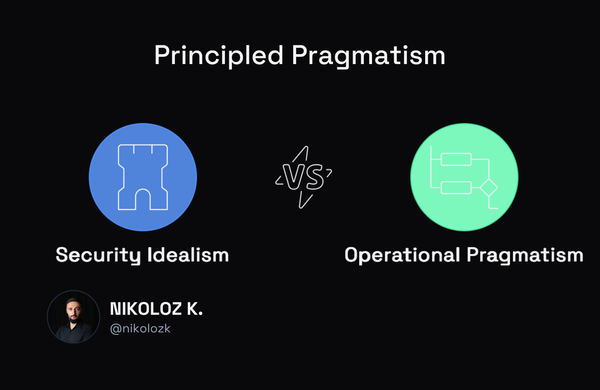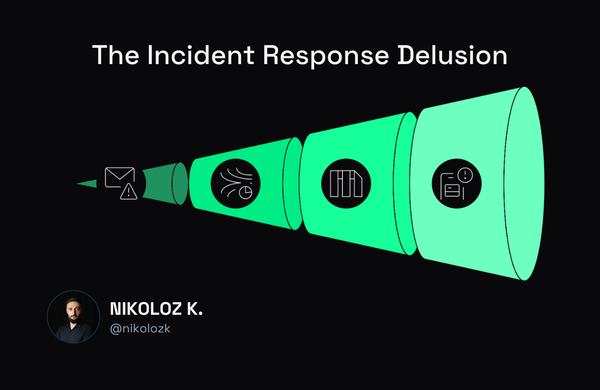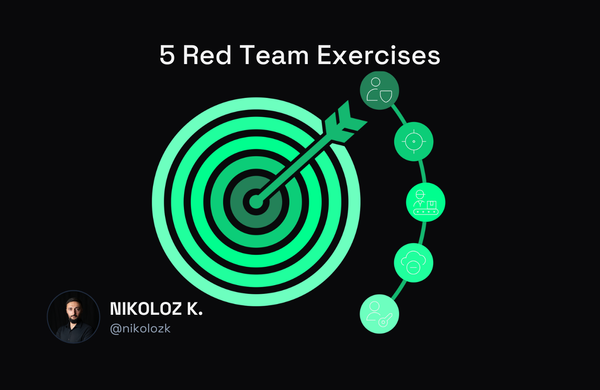Cybersecurity Guide for Improving the CI/CD Pipeline

Nikoloz Kokhreidze
Explore NSA & CISA-backed strategies for CI/CD security. Understand the importance of security scanning, vulnerability management, secrets management, and more.

Continuous Integration/Continuous Delivery (CI/CD) environments are the bedrock for organizations seeking to streamline software development and deployment. However, as the adoption of CI/CD environments escalates, the call for robust security measures to defend against potential threats is becoming louder. In this light, the National Security Agency (NSA) and the Cybersecurity and Infrastructure Security Agency (CISA) have launched a comprehensive guide on Defending CI/CD Environments, offering key insights and guidance for securing these environments.
Key Threats to CI/CD
Insecure code
In the realm of CI/CD, insecure code signifies code containing vulnerabilities or weaknesses that can be exploited by threat actors. Such code can include poorly written segments, code that bypasses secure coding standards, or code not adequately scrutinized for security vulnerabilities. These loopholes can trigger a plethora of security problems, including data breaches, system compromise, and unauthorized exposure of sensitive information.
Poisoned pipeline execution
Poisoned pipeline execution embodies a threat scenario where an attacker injects malicious code into the pipeline, subsequently executed during the build or deployment process. This infiltration can lead to the rollout of compromised software or the exfiltration of sensitive data, causing extensive damage if not promptly tackled.
Insufficient pipeline access controls
Insufficient pipeline access controls pose a security threat when the necessary safeguards restricting pipeline access are missing. This loophole could allow unauthorized modification or deletion of pipeline components, jeopardizing the pipeline's integrity and the developed software's security.
Exposure of secrets
Exposure of secrets refers to the risk of sensitive information, such as passwords, API keys, and credentials being accessed by unauthorized individuals. This could occur due to insecure storage or transmission of secrets or lack of adequate access controls.
Cybersecurity Best-Practices for Protecting CI/CD
Integrate Security Scanning and Vulnerability Management into the CI/CD Pipeline
To safeguard your CI/CD pipeline, incorporate automated security testing tools to scan code for vulnerabilities during the build process. However, simply detecting vulnerabilities is not enough. Implement a robust vulnerability management mechanism, which includes proper tracking, remediation, and validation of fixes.
Implement Secrets Management
Employ secure vaults for storing secrets and enable automated rotation of secrets to ensure their safety. This also includes methods of securely injecting secrets into CI/CD processes.
Adopt Zero Trust Model
Implement least-privilege policies for CI/CD access, and adopt a Zero Trust model that assumes no trust for any entity, irrespective of its location in relation to the network perimeter.
Restrict Untrusted Libraries and Tools
Implement least-privilege policies for CI/CD access, allowing only authorized personnel to access the CI/CD pipeline and its components. Analyze committed code and remove any temporary resources that may contain untrusted libraries or tools. Use software bill of materials (SBOM) and software composition analysis (SCA) to identify and track the use of third-party libraries and tools.
Analyze Committed Code
Use security scanning as part of the pipeline to analyze committed code. Other methods include reviewing code for vulnerabilities, conducting static and dynamic analysis, and using SCA and SBOM to identify and track open source components and their dependencies.
Remove Temporary Resources
Use automated scripts or tools to identify and delete temporary files and directories after a build or deployment is complete. Configure the CI/CD pipeline to automatically clean up temporary resources after a certain period or after a certain number of builds or deployments.
Maintain Comprehensive Audit Logs
Keep audit logs to track and analyze all activities and changes made to the pipeline. This can aid in identifying unauthorized or malicious activity, and provide a record of changes for troubleshooting and compliance purposes.
Implement Software Bill of Materials (SBOM) and Software Composition Analysis (SCA)
Integrate SBOM and SCA into your pipeline and employ endpoint detection and response (EDR) tools. Use these to scan for vulnerabilities and identify compliance issues in third-party libraries and components. These scans' results should inform decisions about including or excluding certain components.
Threat Modeling
Engage in threat modeling to understand what you're protecting and who you're protecting it from. This essential security activity helps you build a robust CI/CD security strategy.
Plan, Build, and Test for Resiliency
Implement SBOM and SCA, maintain up-to-date software and operating systems, keep CI/CD tools up-to-date, remove unnecessary applications, and implement endpoint detection and response (EDR) tools.
Employee Training and Fostering a Security Culture
Finally, remember that securing CI/CD environments is not only about the right technology and processes but also about the people involved. Foster a security culture within your organization and conduct regular security training for all employees interacting with the CI/CD pipeline.
In addition to these technical recommendations, it is also important to implement strong access controls, maintaining up-to-date software and operating systems, and utilizing two-person rules for all code updates.
Conclusion
As organizations continue to rely on CI/CD environments for software development and deployment, prioritizing security is non-negotiable. It's paramount to take proactive measures to defend against potential threats. The guide by the NSA and CISA serves as a valuable resource for organizations aiming to reinforce their CI/CD security posture, but it is by no means exhaustive. Building a secure CI/CD environment is an ongoing journey, one that requires constant vigilance, regular updates, and an organizational culture that prioritizes security.
Securing your CI/CD pipeline is an ongoing journey, one that requires continuous learning, awareness, and vigilance. For more in-depth resources, practical guides, and actionable tips on CI/CD security, subscribe to Mandos Way now. Stay updated, stay secure, and let's build more resilient systems together!



